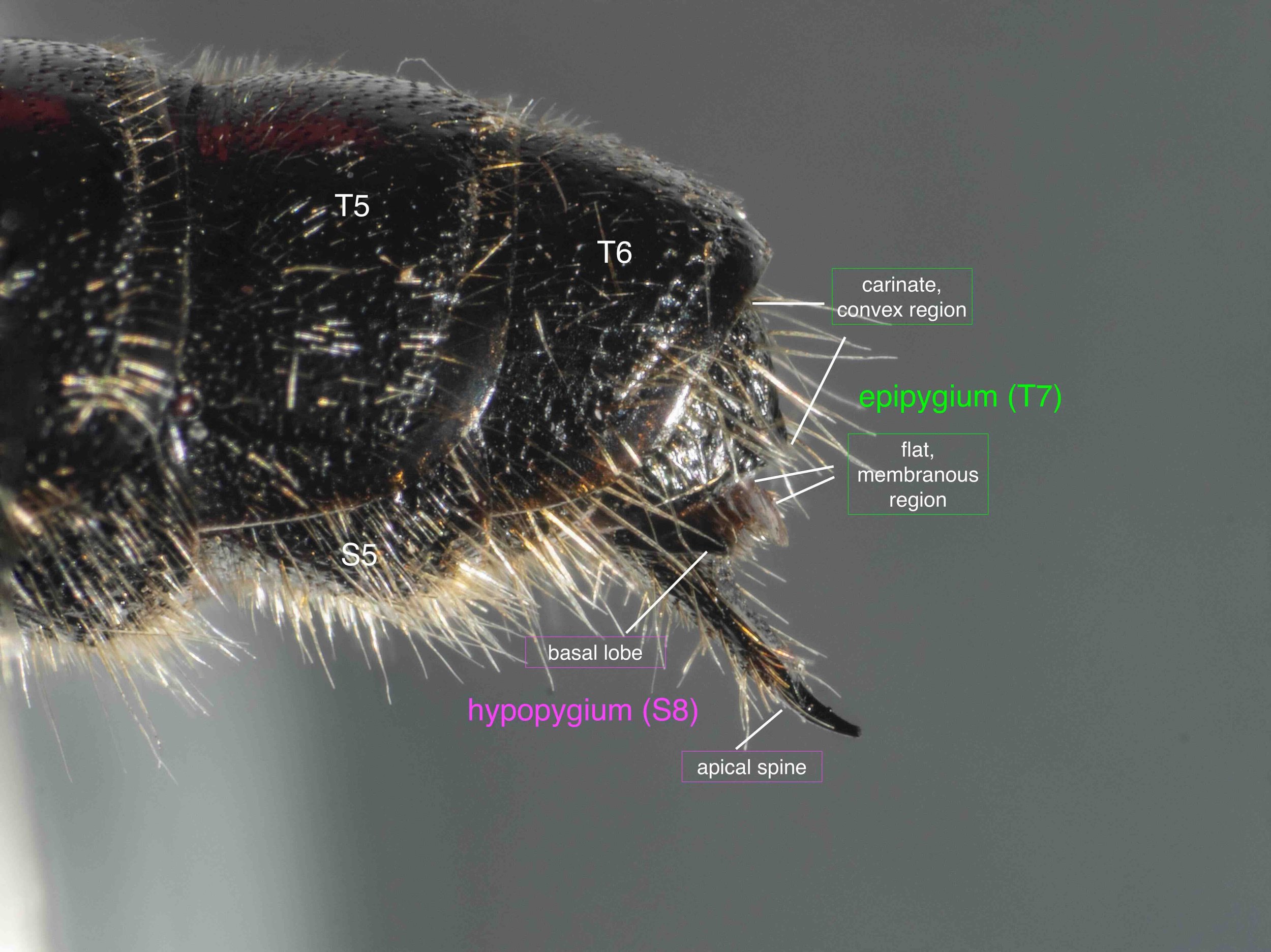
entire metasoma
The coupling apparatus is located at the very end of the body. In many species, including this one, the hypopygium has an apical spine that extends beyond the tip of the metasoma.

terminal segments of metasoma
Up close, parts of T7 and S8 are visible. Note that S6 and S7 are less apparent, especially when viewed laterally.

entire phallus

volsellae
The shape is highly complex and normally concealed by the parameres. Here the isolated volsella shows its lateral face, while the partner shows the shape as seen medially.

volsella & paramere
Another medial view of the volsella, this time with the basiparamere removed. Note that the hairs on the paramere have been damaged during the cleaning process.

paramere
With the volsella removed, the hollow nature of the paramere is revealed.

paramere
The shape of the paramere is useful for genus-level ID, including the shape of the apex and the extent of the suture between the paramere and basiparamere. The outer face of the paramere, as seen here, is typically visible during coupling … although it’s still tricky in a field photo, unless the insects are large and the image sharp.

aedeagus
A single sclerite, but a complex and partially delicate one.








